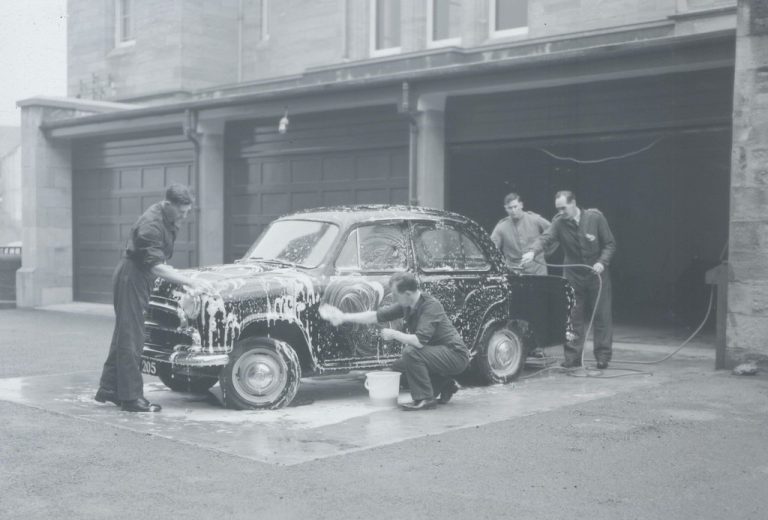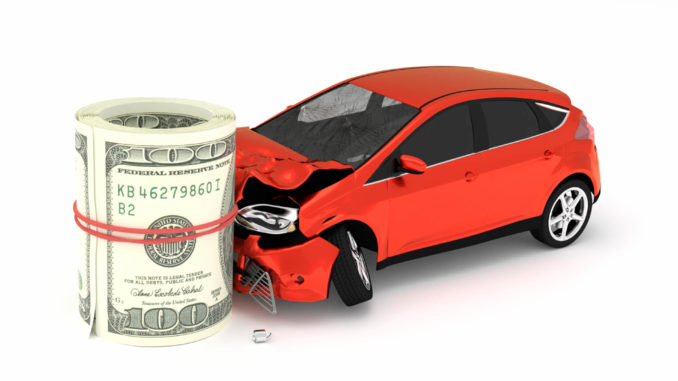
Electric vs Gasoline Cars: Which is Right for You?
October 14, 2023
The Transformative Impact of Artificial Intelligence on the Automotive(Cars) Industry
October 18, 2023How to Maintain Your Car’s Value: Tips for Long-Term Ownership and Car Maintenance Checklist: Essential Tasks for Every Owner
When you invest in a car, it’s not just a means of transportation; it’s also an investment. Over time, the value of your car can depreciate, but with the right care and maintenance, you can significantly slow down this process. Whether you plan to keep your car for many years or eventually sell it, maintaining its value is essential. In this comprehensive guide, we’ll explore the strategies and best practices for ensuring your car retains its value, from routine maintenance to smart ownership choices.
Regular Maintenance
1. Follow the Manufacturer’s Service Schedule
One of the most critical aspects of maintaining your car’s value is following the manufacturer’s recommended service schedule. These schedules are designed to keep your car in optimal condition and prevent issues from developing. Regular oil changes, fluid checks, brake inspections, and other routine maintenance tasks are vital for the longevity of your vehicle.
2. Choose Quality Service Centers
When it comes to maintenance and repairs, don’t compromise on the quality of service. Opt for authorized service centers or reputable mechanics. They use genuine parts and have the expertise to keep your car in the best possible shape. Regular maintenance by professionals can prevent costly issues in the long run.
3. Keep Detailed Records
Maintain a comprehensive record of all service and maintenance activities. This documentation not only helps you stay on top of your car’s needs but also adds value when you decide to sell. Prospective buyers are more confident in purchasing a well-documented, well-maintained vehicle.
4. Consider Extended Warranties
Extended warranties can offer peace of mind and add value to your car. Many buyers feel more confident purchasing a vehicle with an extended warranty because it suggests that the car has been well-maintained and protected.
5. Address Warning Lights Promptly
If a warning light on your dashboard comes on, don’t ignore it. Many problems can be prevented from becoming serious and costly if addressed promptly. Ignoring warning lights can lead to more significant issues that impact your car’s value.
Exterior Care
1. Regular Washing and Waxing
A clean and well-maintained exterior not only looks good but also prevents rust and paint damage. Regularly wash your car, and consider waxing it to protect the paint from UV rays and environmental contaminants. A polished exterior contributes to your car’s overall appeal.
2. Park in the Shade
Prolonged exposure to direct sunlight can damage your car’s paint and interior. Whenever possible, park your car in the shade or use a car cover to shield it from the sun’s harmful effects. This simple step can preserve your car’s appearance.
3. Address Paint Chips and Scratches
Small chips and scratches may seem insignificant, but they can lead to more extensive damage if left unattended. Promptly address these issues with touch-up paint or professional repair services. This prevents rust from developing and maintains your car’s exterior aesthetics.
4. Rust Prevention
If you live in an area where road salt or ocean air is prevalent, consider investing in rust prevention treatments. These treatments create a barrier to protect your car’s metal surfaces, preventing rust from taking hold.
5. Garage Storage
If you have a garage, use it. Keeping your car in a garage provides protection from the elements, including UV rays, rain, and snow, which can all cause damage over time.
Interior Care
1. Regular Cleaning
The inside of your vehicle merits as much consideration as the outside. Routinely vacuum, clean, and condition your vehicle’s inside surfaces. Residue, soil, and grime can collect over the long run, prompting mileage.
2. Use Seat Covers and Floor Mats
Protect your car’s upholstery and carpet by using seat covers and floor mats. These accessories not only shield your interior from spills, stains, and wear but also make your car more attractive to potential buyers.
3. Avoid Smoking and Pets
Smoking in your car and allowing pets inside can lead to lingering odors and stains that are challenging to remove. To maintain your car’s value, it’s advisable to establish smoke-free and pet-free rules.
4. Leather Care
If your car has leather seats or surfaces, invest in quality leather cleaning and conditioning products. This will help keep the leather soft and supple, preventing cracks and tears.
5. Interior Protection
Consider applying interior protectants to surfaces like the dashboard and door panels to prevent fading and cracking. These products can extend the life and appeal of your car’s interior.
Driving Habits
1. Gentle Driving
Your driving habits significantly impact your car’s wear and tear. Avoid aggressive driving, sudden stops, and rapid accelerations. Smooth driving reduces stress on the engine, brakes, and other components, extending their lifespan.
2. Watch Your Speed
Driving at high speeds not only consumes more fuel but also increases the risk of accidents. Keeping to the speed limit not only makes your car safer but also reduces mechanical strain and prolongs your car’s life.
3. Avoid Overloading
Overloading your car can strain the suspension, brakes, and tires. Refer to your vehicle’s maximum load capacity, and avoid exceeding it.
4. Cold Starts
When starting your car in cold weather, allow it to warm up for a minute or two before driving. This gives the engine’s oil a chance to circulate properly and reduces wear.
5. Highway vs. City Driving
Highway driving is generally less stressful on a car than city driving. If possible, opt for longer highway routes rather than stop-and-go city traffic, which can be hard on the engine and brakes.
Invest in Upgrades and Repairs
1. Timely Repairs
When you notice a problem, address it promptly. Delaying repairs can lead to more extensive issues and higher costs down the road. A well-maintained car is more valuable.
2. Consider Upgrades
Strategically chosen upgrades, such as advanced safety features or improved entertainment systems, can increase your car’s appeal and value. However, consider the cost-benefit ratio before making significant upgrades.
3. Keep Original Parts
If you do decide to make upgrades or repairs, keep the original parts. Many buyers prefer to purchase a car with its original components, and having these parts available can add value to your vehicle.
Ownership and Documentation
1. Keep All Manuals
Store all car manuals, including the owner’s manual, maintenance records, and any documents related to repairs or upgrades. These documents are valuable when selling your car.
2. Regular Appraisals
Periodically assess your car’s value using resources like the Kelley Blue Book or NADA Guides. Understanding your car’s current value helps you make informed decisions about when to sell or trade it.
3. Insurance History
Maintain a history of your car’s insurance records. A well-documented insurance history can provide potential buyers with insight into your car’s accident and repair history, offering transparency and confidence in the purchase.
4. Extended Warranties
If you sell your car, consider transferring any remaining extended warranties to the new owner. This can be an attractive feature for buyers and add value to your vehicle.
Conclusion
Maintaining your car’s value for long-term ownership is not just about extending its lifespan but also ensuring it remains a desirable purchase. Regular maintenance, proper care of the exterior and interior, responsible driving habits, and strategic upgrades all play essential roles. By following these tips, you can protect your investment and enjoy the benefits of a well-maintained vehicle for years to come. Whether you decide to keep or sell your car in the future, these practices will help you get the most value from your automobile. Your car is not just a mode of transportation; it’s an investment, and by following these guidelines, you can make sure that investment pays off over the long term.
Car Maintenance Checklist: Essential Tasks for Every Owner
Owning a car is a significant responsibility that goes beyond the thrill of driving. To ensure your vehicle remains safe, reliable, and efficient, regular maintenance is crucial. Neglecting maintenance can lead to costly repairs and, in the worst case, compromise your safety on the road. In this comprehensive guide, we will provide you with a detailed car maintenance checklist, covering essential tasks that every car owner should perform. By following this checklist, you can extend the lifespan of your car and maintain its value.
The Importance of Car Maintenance
Before diving into the specifics of a car maintenance checklist, it’s important to understand why maintenance matters.
1. Safety
Your safety and the safety of others on the road is paramount. Regular maintenance helps prevent breakdowns and accidents caused by mechanical failures.
2. Reliability
Proper maintenance ensures that your car starts reliably and performs as expected. You can trust your vehicle to get you to your destination without unexpected hiccups.
3. Longevity
Vehicles that get customary upkeep will quite often endure longer. Proper care can add years to your car’s life, saving you money on replacement vehicles.
4. Cost Savings
Precaution upkeep is frequently more affordable than significant fixes. By catching issues early, you can address them before they become costly problems.
5. Fuel Efficiency
A well-maintained car is more fuel-efficient. Regular oil changes, proper tire inflation, and a clean air filter can save you money on fuel costs.
Monthly Car Maintenance
Some car maintenance tasks should be performed monthly.
1. Check Tire Pressure
Properly inflated tires improve handling, fuel efficiency, and the lifespan of your tires. Refer to your car’s manual for the recommended tire pressure and use a pressure gauge to check and adjust it.
2. Inspect Tires for Wear and Damage
Look at your tires for indications of wear, like lopsided tracks or lumps. Replace tires that are worn out or damaged to ensure safe driving.
3. Test Exterior Lights
Regularly check your car’s headlights, taillights, turn signals, and brake lights. Replace bulbs that have burnt out, ensuring visibility and safety.
4. Inspect Windshield Wipers
Worn-out wiper blades can hinder your visibility during rain or snow. Inspect and replace them as needed, and make sure the wiper fluid reservoir is filled.
5. Examine the Air Filter
A perfect air channel is fundamental for ideal motor execution. If it’s dirty, replace it to maintain fuel efficiency and engine health.
6. Check Fluid Levels
Regularly check the levels of essential fluids: engine oil, transmission fluid, coolant, brake fluid, and power steering fluid. Ensure they are at the recommended levels and top up as needed.
Quarterly Car Maintenance
Other tasks should be performed quarterly.
1. Rotate Tires
To ensure even wear, have your tires rotated every 6,000 to 8,000 miles. This extends the lifespan of your tires and improves handling.
2. Inspect the Brakes
Brake pads and rotors wear down over time. Have a professional mechanic inspect the brakes and replace them if necessary. Maintaining proper braking is vital for safety.
3. Check the Battery
Inspect the battery’s connections and ensure they are clean and secure. Consider having a load test to determine its overall health.
4. Examine Belts and Hoses
Inspect your car’s belts and hoses for signs of wear, cracks, or leaks. These components are vital for the engine’s operation and should be replaced when necessary.
5. Check the Exhaust System
A leak in the exhaust system can lead to harmful fumes entering the cabin. Inspect the exhaust system for any visible damage, rust, or lose parts.
6. Test the Suspension
Have a mechanic check the suspension system, including shocks and struts, for signs of wear or damage. A very much kept up with suspension further develops ride solace and taking care of.
Semi-Annual Car Maintenance
There are also semi-annual maintenance tasks to consider.
1. Change the Oil and Filter
Regular oil changes are fundamental to engine health. Follow the manufacturer’s recommended oil change intervals and replace the oil filter at the same time.
2. Inspect the Cooling System
Check the radiator, hoses, and coolant levels. Ensure there are no leaks and that the coolant is at the right concentration to prevent overheating.
3. Check the Transmission Fluid
For automatic transmissions, check the transmission fluid levels and condition. Consult your car’s manual for the specific procedure.
4. Test the A/C and Heating Systems
Test the air conditioning and heating systems to ensure they are functioning correctly. This ensures comfort and safety in various weather conditions.
5. Inspect the Fuel System
Inspect the fuel lines and connections for leaks or damage. Proper fuel system maintenance ensures fuel efficiency and reduces the risk of fires.
6. Lubricate Chassis Components
Lubricate chassis components such as ball joints, steering linkage, and suspension parts. This prevents premature wear and tear.
Annual Car Maintenance
Some maintenance tasks should be performed once a year.
1. Complete a Comprehensive Inspection
Consider a professional inspection of your vehicle once a year. A qualified mechanic can identify potential issues that might not be evident during routine maintenance.
2. Replace the Cabin Air Filter
The cabin air filter improves the air quality inside your car. It should be replaced annually to ensure proper functioning and passenger comfort.
3. Check the Battery and Charging System
Have your car’s battery, alternator, and starter checked by a professional to ensure the charging system is operating correctly.
4. Inspect the Emissions System
An emissions system inspection is necessary to ensure your car complies with environmental regulations. This is especially crucial if your vehicle is subject to emissions testing.
5. Examine the Timing Belt
Timing belts that have a limited lifespan and should be replaced as recommended by your car’s manufacturer. Neglecting this can lead to engine damage.
6. Test the Spark Plugs and Ignition System
Spark plugs and the ignition system play a crucial role in your car’s performance. Have a mechanic inspect and replace them as needed.

Additional Considerations
1. Seasonal Maintenance
In regions with significant seasonal changes, consider seasonal maintenance tasks such as checking the HVAC system before summer and winter.
2. Drive Sensibly
Your driving habits also affect your car’s maintenance needs. Avoid aggressive driving, sudden stops, and rapid acceleration to reduce wear and tear.
3. Follow the Owner’s Manual
Always refer to your car’s owner’s manual for the manufacturer’s specific maintenance recommendations. It provides guidance tailored to your vehicle’s make and model.
Conclusion
Regular car maintenance is the key to a safe, reliable, and long-lasting vehicle. By following this comprehensive car maintenance checklist, you can address essential tasks that every car owner should perform, from checking tire pressure to inspecting the timing belt and spark plugs.
Don’t overlook the importance of maintenance for safety, reliability, longevity, cost savings, and fuel efficiency. Whether you perform these tasks yourself or rely on professional mechanics, staying on top of your car’s maintenance needs ensures that it will serve you well for years to come. Remember, a well-maintained car not only keeps you safe but also saves you money by preventing costly repairs and maximizing fuel efficiency. Your vehicle is a valuable asset, and proper maintenance is the key to protecting your investment.


